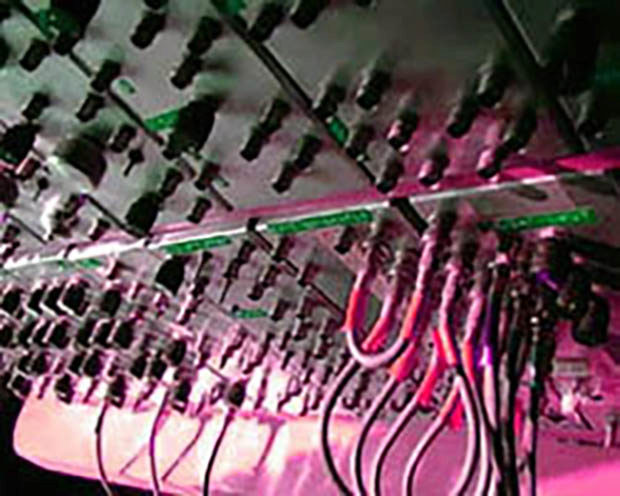Sandin Image Processor (IP)
January 1st, 1971 - January 1st, 1973
Categories: Visualization

About
Between 1971 and 1973, Dan Sandin designed and built the Sandin Image Processor (IP) a patch programmable analog computer for real-time manipulation of video inputs through the control of the grey level information. The version that allowed for color manipulation was refered to as the Color IP
This modular design was based on the Moog synthesizer and is often explained as the “video equivalent of a Moog audio synthesizer” or as a video synthesizer. That is, it accepted basic video signals and mixed and modified them in a fashion similar to what a Moog synthesizer did with audio. An analog, modular, real time, video processing instrument, it provided video processing performance levels and produced subtle and delicate video effects that became popular with early video artists.
The IP’s real-time effects naturally led to its use in live theater performance, including “Electronic Visualization Events” where the IP was seen processing the output of Tom DeFanti’s Graphics Symbiosis System - GRASS. Real-time image processing was combined with sound to create visual concerts.
Physically, an Image Processor system would be built out of modules. Several types of modules were defined and typically would be an aluminum box containing a circuit board inside, video connectors and knobs on front of box and power connector on back of box.
The modules would be organized in rows. Individual systems could vary in size and increase in power with the addition of more modules. Typical modules would be signal sources, combiners and modifiers, effects modules, sync, color encoder, color decoder, and NTSC video interface.
Sandin was an advocate of education and espoused a non-commercial philosophy, emphasizing a public access to processing methods and the machines that assist in generating the images.
Accordingly, he placed the circuit board layouts for the IP with a commercial circuit board company and freely published schematics and other documentation. The Do It Yourself ethos combined with the low cost of the parts and a free dissemination of information created a large following of video artists, students, and others interested in experimental video electronics. The modules were often assembled by individuals who had no prior knowledge of electronics fabrication. Also, from time to time Sandin and staff would hold fix-it parties where modules that had failed to work would be repaired by the senior staff.
The Image Processor’s educational success can be found in its numbers. In its time, more IP’s were built than any other commercial “video-art” synthesizer. This distribution method was, and to a very large extent still is, unique in the proprietary and competitive industrial field of advanced electronics.
Sandin’s IP, and the instructional video that accompanied the modules trained and inspired numerous individuals who would go on to make substantial contributions to both art and science.
Sandin received grants in support of his work from the Rockefeller Foundation (1981), the National Science Foundation, the National Endowment for the Arts (1980) and the Guggenheim Foundation (1978). Sandin’s early IP video work “Spiral PTL” was one of the first pieces included in the Museum of Modern Art’s video art collection.